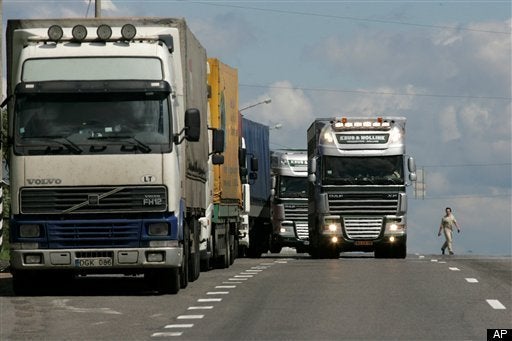
Regulatory agencies are created to write laws that Congress deems too technically complex, cumbersome or politically difficult to pass on a case-by-case basis. If you're a liberal, these agencies represent a delegation of authority. For conservatives, Congress is abdicating authority. Nowhere are these philosophies more apparent and the resulting turmoil greater than at the Environmental Protection Agency (EPA). Environment, for some, is a religion with the same level of vitriolic exchange that one might expect between Darwinians and Creationists. Today's litmus test is whether you believe in the doctrine of man-made Global Warming.
We now embark on the extended sectarian battle between Representative Upton (R-Mich.) and Lisa Jackson, the Administrator of EPA. While Representative Upton and the anti-EPA lobby can rail against Lisa Jackson, EPA has never issued a regulation that was not scrutinized by the Executive, litigated, and ultimately judicially reviewed and approved. Furthermore, there has never been a documented example of net job losses due to EPA regulations that substantiated the accompanying dire projections from industry. If there is a real problem, it is that the laws governing EPA are old and unprepared to deal with today's issues.
In the 1970s and 80s we had pollution problems where harm was observable and direct. Whether it was water, air, groundwater, or land disposal, the problems were apparent to the most casual observer even if the solutions were not palatable for some. Today we require complex mathematical models to hypothesize underlying potential harm. Historically, costs were incurred by Industry even if these costs eventually meandered indirectly into higher consumer prices. Now, the costs of controlling many aspects of pollution flow directly to consumers (e.g., farm runoff, climate change).
Today's problems highlight flaws in the existing laws that only time could have identified. No one expected to see coal-fired utilities operating in 2011 without state-of-the-art air pollution control systems. Yet, this is exactly the situation. In order to force adequate controls, EPA must resort to contrived uses of the law to achieve a common-sense goal. Similarly, no one anticipated that EPA would be the go-to Agency for controlling the ingestion of potential toxics like environmental estrogens (e.g., BPA) from food packaging or toys. Yet, greenhouse gases are ultimately the best example of old laws yielding confused guidance and solutions.
Throughout the Clean Air Act (CAA), Congress specified size limits to discriminate between major, minor, di minimis, and small business sources so as to limit the regulatory burden on industry and the economy. These limits vary by sections of the Act, but on the whole, Congress established hurdles of between 50 and 250 tons of pollutants.
Do these levels seem large? They are unless you consider greenhouse gases, then appearances can be deceiving. EPA wrote a "tailoring rule" in early 2010 to require permits for units emitting at least 100,000 tons of greenhouse gases. This limit is 40 times larger than anything Congress specified in the Clean Air Act. To put this in perspective, a mid-to-large restaurant with gas hot water, stove and heat will have greenhouse gas emissions of between 100 and 200 tons. This is why EPA wrote the tailoring rule. If they had not, the regulatory burdens associated with the legislative language in the Clean Air Act would require permits from small stationary sources (e.g., restaurants, office buildings, small companies) that were never envisioned by Congress. In fact, the Clean Air Act defines a small business as emitting less than 75 tons of regulated pollutants. Controlling greenhouse gases could eliminate most companies from any small business provisions.
The old adage "to a hammer everything looks like a nail" is appropriate for the Clean Air Act. The guiding paradigm of the Clean Air Act is the control of hazardous pollutants that have a direct impact on human health and the environment. The predominant tool legislated by Congress in the Clean Air Act relies on identifying the technology solutions that are used by the best facilities and requiring their application by all other similar sources. In many instances, cost is not a legal factor to be included in the deliberations. The regulatory logic is that because the best technology is in use, it is economically achievable.
Reducing our carbon footprint is not going to be easy or inexpensive. There are no magic solutions, but our security and economy require a solution. Right now the Clean Air Act gives the only legislative route towards a solution: It is a Rube Goldberg.
Congress must amend the Clean Air Act to control pollution in the 21st century. Otherwise, problems of ecology, sustainability, and economics will be solved with tools meant to control toxic pollutants